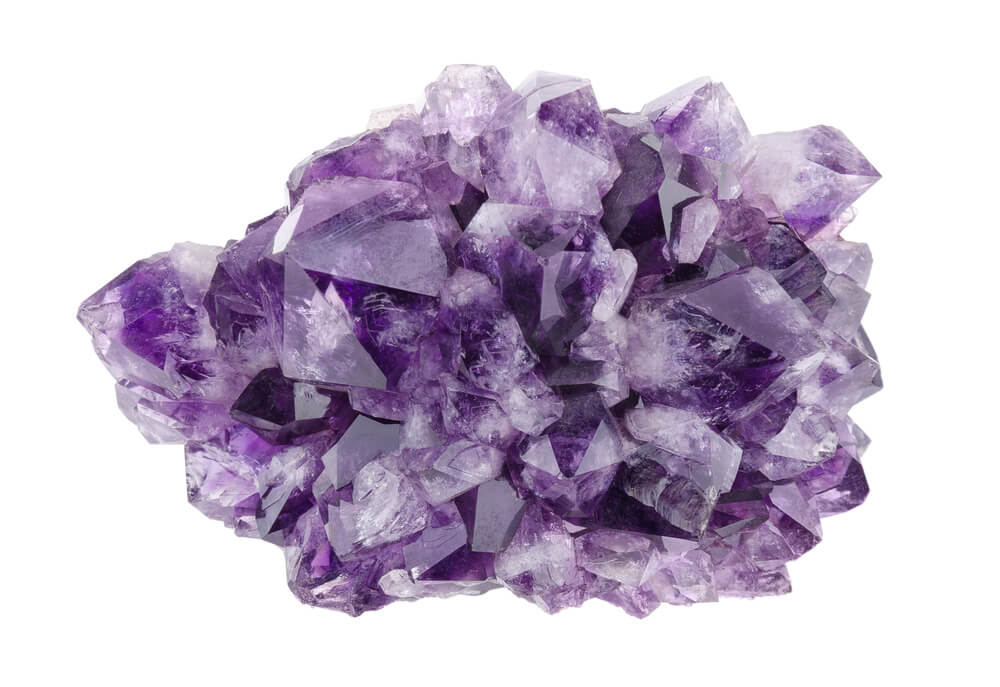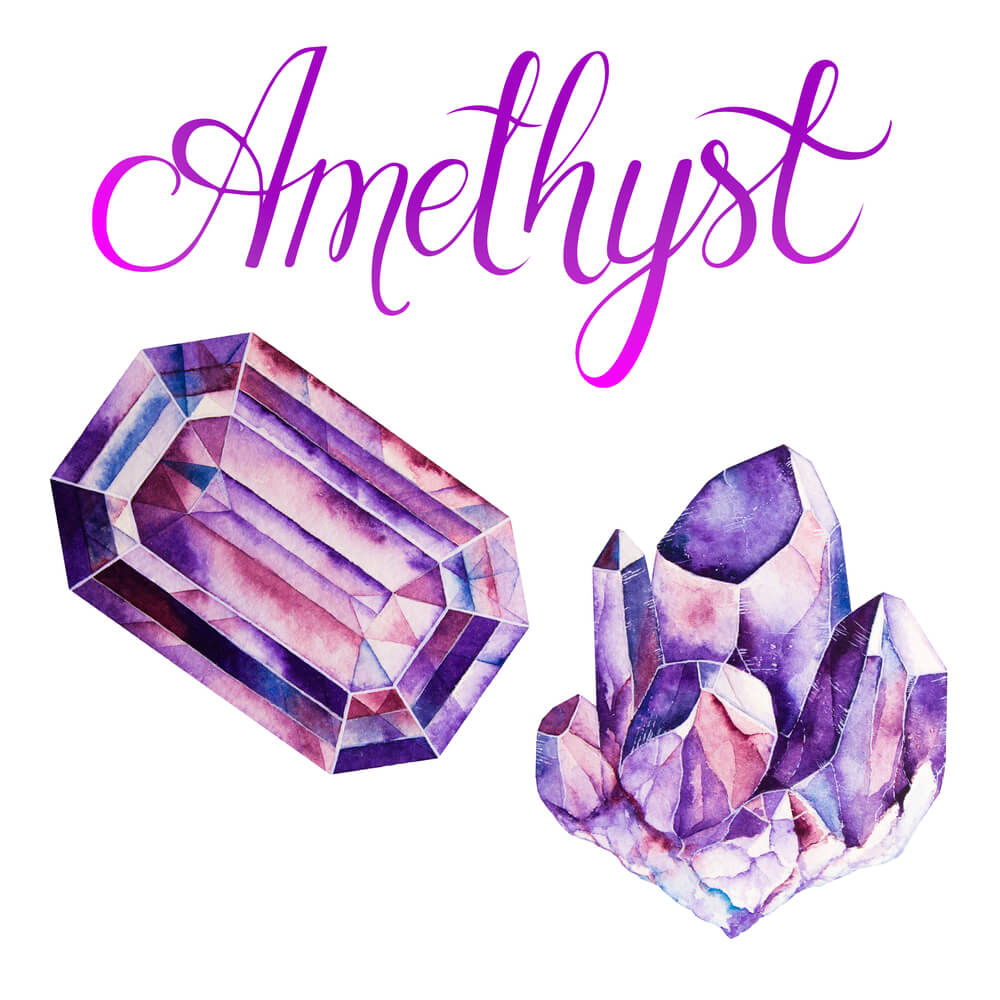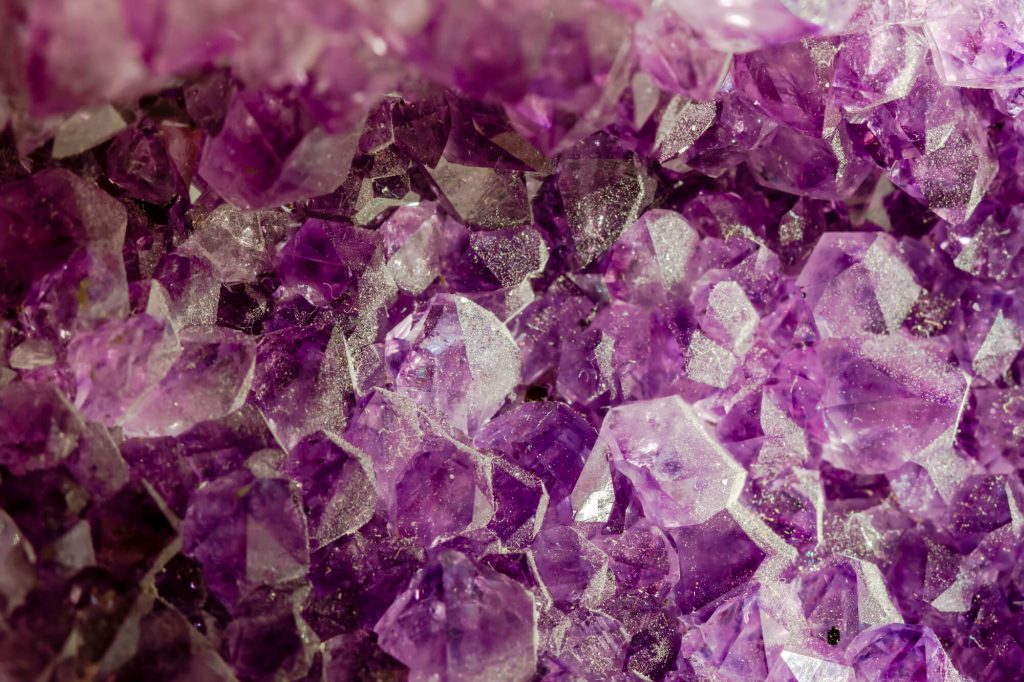Introduction of Amethyst Stone
The stone that known as the birthstone for February is Amethyst kind of purple quartz. This completely varies in color from kind of light lavender to the deep-purple hues exposed to several impurities of iron content within the quartz. Its vivid color, durability, and affordability make amethyst one of the most popular gemstones in the world.
The word amethyst was derived from the Greek amethystos meaning “not drunk.” It corresponds to an old belief among members of this civilization that the gemstone could prevent intoxication. Today, it holds an appreciation for being a beautiful hue, versatile, and is commonly associated with peace, balance, and inner strength.
| Properties of Amethyst | Description |
|---|---|
| Color | Light Lavender to the deep purple |
| Hardness | Mohs scale of 7 |
| Birthstone | February |
| Associated Symbolism | Peace, balance and inner strength |
| Primary Locations | Brazil, Uruguay, Russia (Ural Mountains) |
| Care | Warm, soapy water is safe. Avoid heat and light |
The Origin and History of Amethyst
Amethyst has a long history dating back from the times of ancient civilizations. The ancient Egyptians used the amethyst in their jewellery while the Greeks thought it could prevent drunkenness and so carved drinking vessels from it. It is also mentioned as one of the twelve stones adorning the breastplate of the high priests in the Bible symbolizing the tribe of Dan.
During the middle ages, European soldiers while in battle wore amethyst amulets believing the stone could protect it against sober intoxication as well as defended in when in a war keeping them calm and cool-headed. It displayed often adding to royal insignia and crowns as an insignia of power.
Amethyst was ranked one of the five cardinal gemstones, including diamond, sapphire, ruby and emerald before abundant deposits were discovered in Brazil in the 19th century. Nowadays, the main amethyst sources are in Brazil, Uruguay and Ural Mountains in Russia.
The beauty of amethyst, its ready available, abundant history, all help solidify status as a favorite and ideal gemstone for February’s birthstone.
Mythology and Symbolism of Amethyst
Amethyst is one of the most intriguing myths and legends that can be found in a variety of cultures. It was believed to be a stone connected to Bacchus, the god of wine aimed at saving them from intoxication. Legend says that if a person was to drink from a cup made completely from amethyst a person would be able to consume as much alcohol as they may have desired without the fear of getting drunk.
In medieval times, amethyst was symbolically tied to the deep love and commitment of Valentine’s Day—given its February designation. St. Valentine is said to have worn a ring set with an amethyst carved with the image of Cupid.
Amethyst is regarded by Tibetans as a sacred stone to Buddha, and often rosaries are made from it. In western cultures, it is considered as one of the royal stones symbolising power – often bedecked by bishops and monarchs.
Being considered a birthstone, it is said to project peace, courage, balance, sincerity, and strength towards individuals whose birthday fall in February.

The Different Colors of the Amethyst Gemstone
The iron, present in the quartz, combines with natural or induced irradiation when it lends its attractive coloration to Amethyst. Its hue can be anywhere from a pale, lightly purplish tinged violet to a deep grape purple.
The finest quality amethyst is “Deep Siberian” amethyst which, contains primary purple hue around 75–80%, with 15–20% blue and (dependent on the light source) red secondary hues The deep coloration is more highly valued than lighter stones: they are not common in nature according to its rarity in commercial gemstones “pale and light”.
However, personal preference does play an evident role in determining which shade of amethyst may appeal to them. Some prefer the lighter lilac shades while others are taken by the darker and more intense versions.
The Physical Characteristics and Formation of Amethyst
Being a member of the quartz family, amethyst is comparatively hard as far as gemstones are concerned, with a hardness value of 7 in the Mohs scale of hardness. It is hence strong enough for making any kind of jewelry, including rings which are worn daily-basis-based jewelry.
Amethyst forms in silica-rich liquids that deposited in geodes. Appears as clusters of crystal points, its intensity varies from light purple to the most highly valued deep rich purple with sometimes red or rose flashes.
Amethyst in Jewelry Design
The beautiful violet hues of amethyst make it a favored gemstone in jewelry design. It ranks 7 on the Mohs scale and is fairly durable, based upon this ranking. Whether displayed as the central stone in a solitaire ring or mixed with other gemstones in a multi-colored piece, a touch of regal elegance is assured when amethyst is worn.
The color of amethyst makes it a great combination with both warm and cool metals ranging from yellow and rose gold, sterling silver to white gold. The purple compliments a wide range of other gemstone colors then versatile for different jewelry designs.
Helpful Advice While Caring for and Cleaning Amethyst Jewelry
The amethyst jewelry requires the caring for keeping its beautiful appearance, like all gemstones. The long contact with heat and light should be avoided as they can make its color fade. While cleaning, amethyst can be safely cleaned using warm soapy water. In addition to the amethyst itself, it can be scrubbed behind the stone from where dust has collected using a soft brush.
Store amethyst jewelry in a lined box or soft pouch to avoid scratching by other pieces. It is also necessary to put on jewelry last after applying cosmetics, hairspray and perfume as the chemicals in these can cause damage to stones.

Amethyst: The Birthstone for February
For a person born in the month of February, it is very appropriate that his or her birth gemstone be of the deep and captivating shade of amethyst. Its color of tranquility, bravery, and great equilibrium has made this gem associated with humbleness whenever presented as a gift.
The Psychological and Emotional Significance of Amethyst
In the dimension of mental and emotional states, amethyst is believed to induce tranquility. In this light, it functions as a meditation aid in calming the mind and enhancing the state of awareness.
Amethyst in crystal healing is commonly used to address addiction, helping with sobriety and cleansing the mind from negative influences. It’s a stone to crown chakra, for which crown chakra is the energy center to higher states of consciousness.
How to Choose an Amethyst Birthstone Jewelry Piece
As you choose the amethyst jewelry, be aware of the wearer’s style. Do they like to be noticed wearing big and bold pieces or are more of a fan of dainty and understated jewelry? With its color range from light lavender to deep violet, every shade will appeal to them.
Also, the quality of the amethyst matters. Consider pieces that are clear without any inclusions nor scratches. The cut of the amethyst should be one that will bring out its color and brilliance. And definitely, ensure that the setting is perfectly done especially if the piece will be worn all through.
Conclusion: Amethyst’s Timeless Appeal
With its impressive color, intriguing folklore, and symbolic meanings, amethyst is a gemstone that attracts many to it. It is not just the birthstone of February babies, but a stone that anyone can wear and enjoy. Whether in some simple pendant, chic ring or elegant pair of earrings, an amethyst jewelry has that timeless charm that exceed trends and seasons.

